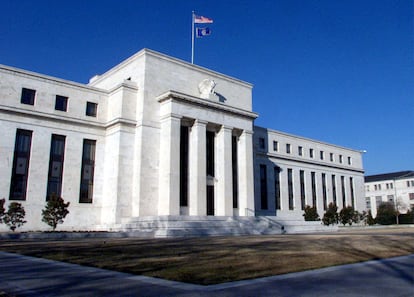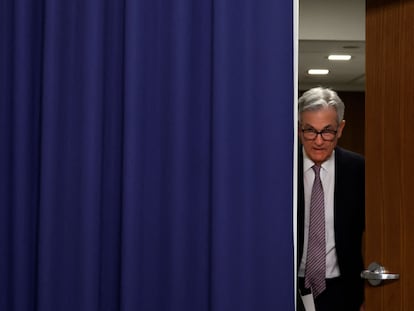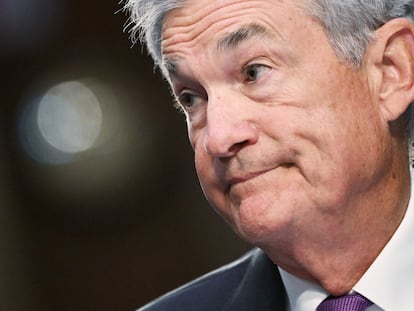Your paycheck could clear faster now that the FedNow instant payment service for banks has launched
FedNow offers instant payment services for banks and credit unions to transfer money for their customers

The Federal Reserve launched a new instant payment service Thursday. FedNow allows banks and credit unions to sign up to send real-time payments so they can offer customers a quicker way to send money between banks.
FedNow, which was first announced in 2019, published a list of banks and credit unions that are already signed up to the service. However, it might take longer for customers to be able to use the service with their bank.
FedNow offers instant payment services for banks and credit unions to transfer money for their customers. Unlike other private money-transferring services like PayPal or Venmo, FedNow services are not offered to customers directly through a third-party app or website. The services will only be available through banks or credit unions. However, once banks have adopted FedNow, they’re expected to make it available on their websites and apps.
Once a bank offers the FedNow services, customers will be able to send money instantly. The service is also available 24 hours a day, seven days a week.
Among the banks that will offer the FedNow services soon are Wells Fargo and JPMorgan Chase.
By creating FedNow, the Fed is making it quicker and more accessible for people to send and receive online payments. The Fed is also catching up with other countries that already have real-time payment systems like FedNow, including England, China, Sweden and India.
FedNow will also equip banks with tools to identify and combat fraud attempts. These tools include the ability for banks to flag suspicious accounts and limit the amount and frequency of payments by those accounts.
Customers, including individuals and businesses, whose banks or credit unions offer FedNow services will be able to send and receive money in real-time. If, for example, a customer wants to send money to a friend, both people have to bank with institutions that offer FedNow services.
Given the speed of transactions, this service can be beneficial for customers in many ways.
Here are some examples:
— If your employer sends your paycheck through FedNow, the paycheck will be able to clear in seconds rather than days.
— If you forgot to pay your rent until the last minute, you will be able to send the money late at night without waiting to have it cleared the next business day.
FedNow is now live but it might take months or years for customers to be able to use this service, it all depends on when your bank makes it available.
The Federal Reserve and the FedNow service cannot access people’s bank accounts and it doesn’t have the authority for additional surveillance, according to Fed officials.
There are key differences between the FedNow service and apps such as Venmo and PayPal. FedNow is a service offered directly to banks and not to customers, which means FedNow does not have an app or website where customers will be able to send money to each other.
While both FedNow and Zelle allow customers to make online transactions, there are some key differences. Zelle is a private app that works with some financial institutions, while FedNow is backed by the Federal Reserve and is envisioned to be adopted by the majority of banks in the country.
Zelle lets you send and receive money instantly but the money might not be available for customers until days after the transaction. With FedNow, the Fed says the money will be available within seconds. Zelle has a customer-facing platform that allows customers to send money through their app while FedNow will not directly interact with customers but rather offer the services to banks.
Fed officials have stressed FedNow is unrelated to the notion of a government-run digital currency, which social media users also falsely claim would lead to the elimination of cash.
“The Federal Reserve has made no decision on issuing a central bank digital currency (CBDC) & would not do so without clear support from Congress and executive branch, ideally in the form of a specific authorizing law,” the agency wrote in a series of tweets in April “A CBDC would not replace cash or other payment options.”
Sign up for our weekly newsletter to get more English-language news coverage from EL PAÍS USA Edition
Tu suscripción se está usando en otro dispositivo
¿Quieres añadir otro usuario a tu suscripción?
Si continúas leyendo en este dispositivo, no se podrá leer en el otro.
FlechaTu suscripción se está usando en otro dispositivo y solo puedes acceder a EL PAÍS desde un dispositivo a la vez.
Si quieres compartir tu cuenta, cambia tu suscripción a la modalidad Premium, así podrás añadir otro usuario. Cada uno accederá con su propia cuenta de email, lo que os permitirá personalizar vuestra experiencia en EL PAÍS.
¿Tienes una suscripción de empresa? Accede aquí para contratar más cuentas.
En el caso de no saber quién está usando tu cuenta, te recomendamos cambiar tu contraseña aquí.
Si decides continuar compartiendo tu cuenta, este mensaje se mostrará en tu dispositivo y en el de la otra persona que está usando tu cuenta de forma indefinida, afectando a tu experiencia de lectura. Puedes consultar aquí los términos y condiciones de la suscripción digital.
More information
Archived In
Últimas noticias
Rowan Atkinson tops Netflix at 70: ‘He’s as funny as ever’
Israeli recognition of Somaliland stirs up the Gulf
Tiger Woods turns 50: Will he continue playing on the PGA Tour or take a back seat?
The surreal journey of James Nnaji, the Barcelona youth player selected in the NBA Draft who ended up in the NCAA
Most viewed
- Oona Chaplin: ‘I told James Cameron that I was living in a treehouse and starting a permaculture project with a friend’
- Reinhard Genzel, Nobel laureate in physics: ‘One-minute videos will never give you the truth’
- Sinaloa Cartel war is taking its toll on Los Chapitos
- Why the price of coffee has skyrocketed: from Brazilian plantations to specialty coffee houses
- Chevy Chase, the beloved comedian who was a monster off camera: ‘Not everyone hated him, just the people who’ve worked with him’










































